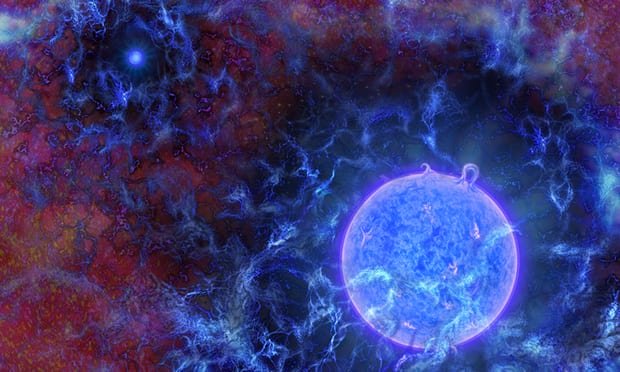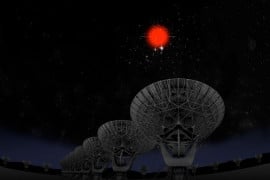
CANBERRA, AUSTRALIA: Researchers from the United States have detected a signal from the universe's earliest stars for the first time using an Australian radio telescope.
The astronomers working at the Commonwealth Scientific and Industrial Research Organization (CSIRO) observatory in Western Australia detected a faint signal from 13.6 billion years back in the universe's history.
"Finding this minuscule signal has opened a new window on the early universe," Judd Bowman, lead researcher of the University of Arizona's Experiment to Detect the Global Epoch of Reionization Signature (EDGES) project, said in a CSIRO media release on Thursday.
Three Pakistani students win international acclaim for outstanding space research
The signal was from the first stars to have emerged in the early universe, approximately 180 million years after the Big Bang.
The finding has been described as a "breakthrough" and "milestone" by Alexander Heger, a professor of Physics and Astronomy at Monash University.
"It is these first stars that are the origin of the first heavy elements in the universe, including the elements necessary to life. They are the seeds for the first galaxies, and they may be essential to understand the formation of the supermassive black holes that lurk in the centers of most galaxies" Heger, who has spent 20 years studying the first stars, said.
NASA releases incredible animations of star exploding with energy of 100 million suns
"These observations, if confirmed, will be a breakthrough, a milestone, in our quest to understand the transition of the 'dark ages' of the Universe - a Universe without stars - to the present state of the Universe, filled with stars and galaxies," he said.
Scientists were able to guarantee that the signal did not come from Earth because it fell in the frequency modulation (FM) spectrum and was so weak that it could not have come from Earth-based sites.
The Murchison Radio-astronomy Observatory (MRO) was chosen for the project because it is in a legislated "radio quiet" zone which keeps human activities that produce radio activities at a minimum within 260 km.
"We wouldn't have a detection from EDGES to report without the support of CSIRO," Bowman said.
India shows off space prowess with launch of mega rocket
"The infrastructure and logistical support that CSIRO has provided for EDGES has enabled our small team to focus on developing the new instrumentation and techniques needed for the experiment."
Antony Schinckel, the CSIRO's head of Square Kilometer Array Construction and Planning, was responsible for developing the MRO.
"Finding this signal is an absolute triumph, a triumph made possible by the extreme attention to detail by Judd's team, combined with the exceptional radio quietness of the CSIRO site," Schinckel said.
"We worked hard to select this site for the long-term future of radio astronomy after exhaustive investigations across the country. We believe we have the gold standard in radio quietness, the best site in the world," he said.
"This is one of the most technically challenging radio astronomy experiments ever attempted. The lead authors include two of the best radio astronomy experimentalists in the world and they have gone to great lengths to design and calibrate their equipment in order to have convincing evidence for a real signal."



































































COMMENTS
Comments are moderated and generally will be posted if they are on-topic and not abusive.
For more information, please see our Comments FAQ